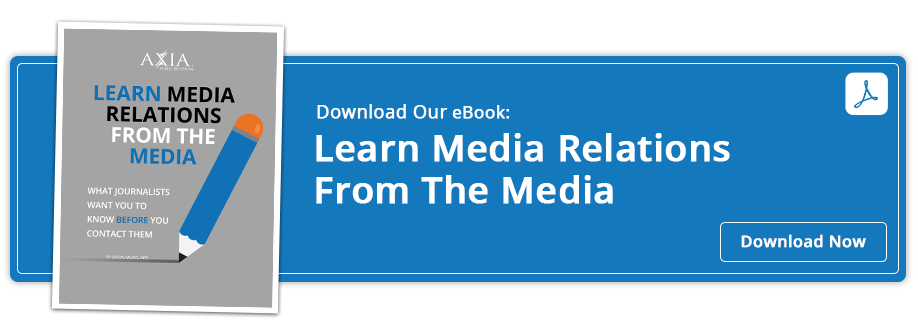 If you see smoke, there is most definitely fire
If you see smoke, there is most definitely fire
With access to breaking news at any time day or night, you may find yourself uncertain whether what you see on your Twitter or Facebook feed is, in fact, news.
For decades, career journalists served as gatekeepers for all that occurred around us, whether government legislation, celebrity missteps or sports scores. By applying skills in storytelling, journalists delivered fact-based news in digestible bits for all to consume. What has muddied the waters is the evolution of technology and the opinion that anything posted online as news, is news. Unfortunately, it’s easy to forget that anyone with a smartphone can photograph or record a scene, post it to social media and broadly distribute it to hundreds of followers – all in less than a minute. That, my friends, is not journalism. While it may be propagation of information, it’s not fact-checked or source-supported news. The penalty, of course, is an overwhelming undercurrent of distrust, that even America’s new president has oft lamented, while hurling insults suggesting journalism is dead. The professional journalist Code of Ethics binds news finders who will soldier on to combat the agents of fake news (individuals, organizations or internet sites) while “seeking truth and reporting it; minimizing harm; acting independently; and remaining accountable and transparent.”
To help discern the wheat from the chaff, here are some guidelines to spot factual versus fake news and avoid being misled by absurdity:
- Read more than the headline.
With a barrage of information streaming at you 24/7, your brain has determined the quickest way from A to B is in a single sentence or less. That is a recipe for disaster. For years, people would wake early to pour over their daily newspaper, coffee in hand, for global news updates and relevant sports scores. Today, technology filters information to our preferences, and if a headline doesn’t strike our fancy, we quickly dismiss it. To spot fake news, take a few extra moments to read the lead paragraph. A well-written news story will tell you nearly all you need to know in this first paragraph, with the remainder of the news article filled with supporting facts, quotes and research. It may not be shocking, but it will have a basis in fact.
- Verify the news through additional sources.
If news is factual and truly newsworthy, hungry journalists will crawl through fire to report it. Journalism is a highly competitive field and editors demand reporters get the news first and also deliver it with optimal factual support so that it stands head and shoulders above the rest. That competitive bent from individuals with amazing tenacity and integrity ensures that when a news story appears across several respectable news outlets and websites, it is likely truth (and intensely fact checked by many).
- Question the purpose of the story.
One main reason so many people use the “headline only” method is to avoid click-bait (content whose main purpose is to encourage visitors to click to a web page). News articles are not written for click-thrus, rather, to inform. Too often, fake news creators do outrageous things to get you to click. They use unexpected headlines and stimulating imagery to tug at your emotions and encourage you to click. True news stories are not as sensational, void of a discernible one-sided opinion or voice and focus purely on the facts. Some may call it boring, but at least if you can discern that feeling, you’ve likely hit a real news story.
Misinformation in any form damages public trust, and while fake news and hoaxes aren’t new, they’re much more pervasive courtesy of broad-reaching technology and social media. If people don’t care to determine whether something is truth before sharing, they too become purveyors of falsehood. To avoid being misled (and to avoid misleading followers, fans and friends), consider the authenticity of the information before sharing it, and you too will become a professional fake news spotter! If you want to learn more about how journalists do their job, download Axia Public Relations’ guide to media relations, created with journalists’ opinions from start to finish.

 Wendy Bulawa Agudelo has nearly 20 years of experience in technology, business, consumer and nonprofit public relations. She serves on the Massachusetts Down Syndrome Congress PR Task Force and is a culinary enthusiast and champion for the special needs community. Wendy has worked for Axia Public Relations since September 2014. Learn more about Wendy Bulawa Agudelo. Connect with Axia on Twitter @axiapr or tell us what you think in the comments below.
Wendy Bulawa Agudelo has nearly 20 years of experience in technology, business, consumer and nonprofit public relations. She serves on the Massachusetts Down Syndrome Congress PR Task Force and is a culinary enthusiast and champion for the special needs community. Wendy has worked for Axia Public Relations since September 2014. Learn more about Wendy Bulawa Agudelo. Connect with Axia on Twitter @axiapr or tell us what you think in the comments below.
Featured image credit: 123rf.com
Topics: public relations, media


Comment on This Article